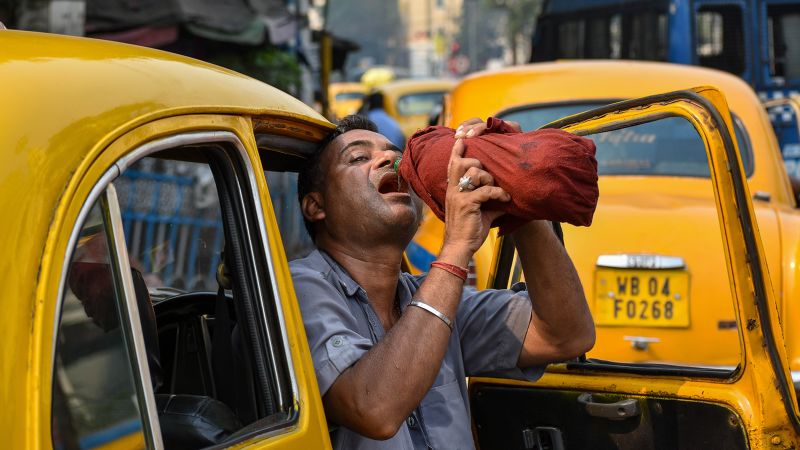LARGE SWATHES OF ASIA SWEATING THROUGH RECORD-BREAKING TEMPERATURES
As a relentless heatwave grips many parts of Asia, temperature records across the continent are being shattered. Since late March, large portions of Southeast Asia have experienced temperatures in the upper 30s to low 40s, with some countries posting their highest ever recorded temperatures this week. Likewise, India’s subcontinent has gone through some brutally hot days, resulting in the death of many people. In this article, we will explore the ongoing heatwave and its potential long-term consequences.
COUNTRIES AND THEIR TEMPERATURE RECORDS
On Tuesday, Laos joined the list of countries with a new all-time record as Luang Prabang reached 42.7°C (109°F). While over the weekend, Thailand topped 45°C (113°F) for the first time in its history. Large portions of the country have experienced extreme temperatures since late March, with Tak city reaching 45.4°C (113°F) last Saturday. Neighboring Myanmar marked an April temperature record when Kalewa in central Sagaing region peaked at 44°C (111°F) on Monday. In China on Tuesday, temperatures rose as high as 42.4°C (108°F) in Yuanyang, coming close to the country-wide record for April. Over 100 weather stations in 12 provinces also broke their April temperature record on Monday.
DEADLY HEATWAVES ACROSS SOUTH ASIA
Pakistan, India, Nepal, and Bangladesh have all experienced temperatures topping 40°C (104°F) for some days. On Tuesday, India’s Meteorological Department reported that 48 weather stations recorded temperatures over 42°C, with Odisha state registering the highest at 44.2°C. In western Maharashtra state, 13 people died from heatstroke on Sunday. They had attended a state award ceremony in Navi Mumbai, which attracted over one million people. More than 50 to 60 people were hospitalized, according to a city police official. This week, Tripura and West Bengal states ordered schools to shut as temperatures rose more than 5°C above average. To ensure the safety of workers, India’s Ministry of Labor issued an advisory to all states and regions, urging them to provide adequate drinking water, emergency ice packs, and frequent rest breaks.
A GLOBAL CONCERN
Heatwaves in India generally occur between March and July, but in recent years, these hot spells have heightened in severity, frequency, and length. Last year, India experienced a searing heatwave, where parts of the country breached over 49°C (120°F). Heatwaves have become more common and are expected to get worse as the planet continues to warm. Scientists predict that dangerous heatwaves could be three to ten times more frequent by 2022. A study warns that those living in the tropics, covering much of Asia, could be exposed to dangerous heat most days of the year. Moreover, days of « extremely dangerous heat, » defined as 51°C (124°F), could double, and it could push the limits of human survivability to withstand such extreme temperatures.
THE DEVASTATING EFFECTS OF HEATWAVES
Heatwaves not only cause extreme heat but also lead to decreased air and water quality, causing severe health issues like heat exhaustion, heatstroke, and dehydration. In Thailand, the intense smoggy season has resulted in pollution levels to spike, with the tourist hotspot of Chiang Mai becoming the world’s most polluted city for seven straight days. Meanwhile, at least one hospital is attending to patients seeking medical treatment for respiratory problems, indicating the magnitude of the crisis in the city. These conditions can lead to hospitalization or death, particularly in vulnerable populations such as the elderly and children.
CONCLUSION
The ongoing heatwave is a wake-up call to take urgent action to mitigate the impacts of the climate crisis. We must reduce our carbon footprint, invest in clean energy, and protect natural habitats, among other actions. We must also take immediate steps to alleviate the pressure on the most vulnerable members of society who are least responsible for creating it. It is time for governments, businesses, and individuals to act with a sense of urgency and prioritize making the necessary changes towards a more sustainable future.
References:
1. CNN article: https://edition.cnn.com/2021/04/14/weather/asia-heat-wave-record-temperatures-intl-hnk/index.html
2. Deutsche Welle article: https://www.dw.com/en/south-asia-struggles-with-deadly-heat-wave/a-57272945
3. Climate Change News article: https://www.climatechangenews.com/2020/05/06/extremely-dangerous-heatwaves-become-common-human-survival-jeopardy/



